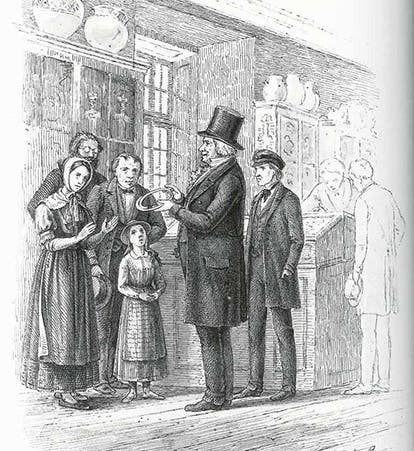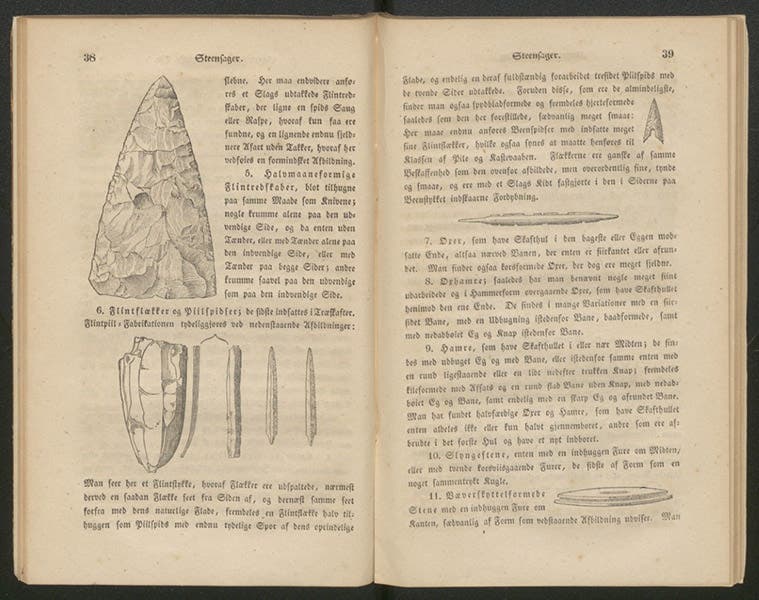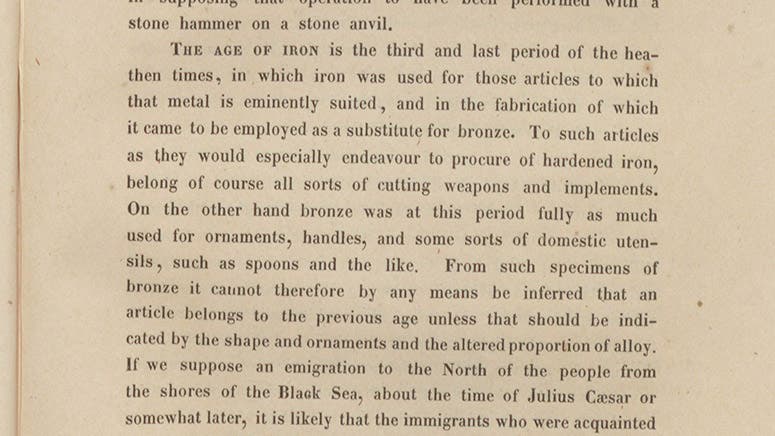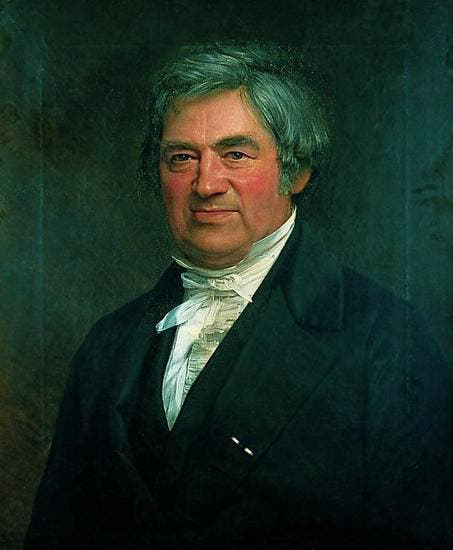Scientist of the Day - Christian Thomsen
Christian Jürgensen Thomsen, a Danish antiquarian, was born Dec. 29, 1788. Thomsen was a businessman and an aggressive collector of antiquities; he was not a historian, or even an academic, when he was appointed secretary of the Royal Commission for the Preservation of Antiquities in 1816. However, he was very good at his job, and by 1819 he had brought all of the antiquities in his care under one roof, as the Royal Museum of Nordic Antiquities, with himself as effective curator.
When the Museum finally settled into the Royal Castle Christiansborg in 1832, Thomsen proceeded to implement a novel classification scheme. Traditionally, museums of antiquities were curated by historians, who tended to impose their own particular views of history onto the objects within their care. Thomsen took quite a different approach; he decided to let the objects speak for themselves. He didn't pay any attention to where they were found; he was more concerned with their material composition, the manner of their production, and their intended use. As he arranged the artifacts in the Museum, he found they sorted themselves into three broad classes; those made of stone, those made of copper or bronze, and those made of iron. Moreover, it appeared from the details of manufacture that the iron tools and objects were made most recently, preceded by the bronze tools, with the stone tools and objects being the oldest. Therefore they represented the productions of three different and successive ages: the Stone Age, the Bronze Age, and the Iron Age. Thomsen did not invent the terms, but he was the first to use them as the basis for a museum classification system, and it was through Thomsen that they became widespread.
The rest of the world learned about Thomsen's three-age system when he published an essay in a Danish booklet, Ledetraad til nordisk oldkyndighed (A Guidebook to Nordic Antiquities) in 1836. The book was translated into German in 1837 and into English (Guide to Northern Archaeology) in 1848. It marks the beginning of modern archaeological classification practices. We have long held the German and English editions in our History of Science Collections, but only recently did we acquire the original Danish Ledetraad. We include here the titlepage of the 1836 Danish edition (second image) and a page opening that has woodcuts of some of the tools displayed in Copenhagen (third image, just above). We also show the title page of the 1848 Guide (fourth image, just below)
We could show you the first appearances of Stone Age, Bronze Age, and Iron Age in the Danish first edition, but since we write for an English-speaking audience, we show you instead the opening paragraphs of the sections on the three ages from the English edition of 1848 (see the three images just below). This edition is often listed in catalogs under the name of the compiler and translator, Frank Egerton, Earl of Ellesmere, but Thomsen’s 1836 pamphlet is here in its entirely, now in English form.
The Museum of Nordic Antiquities was transformed into the National Museum of Denmark in 1891. There is an attractive oil portrait of Thomsen in the National Museum, reproduced here (eighth image, below). The woodcut that we opened with (first image) was printed in 1846 and depicts Thomsen guiding some visitors through his museum.
This is a revised version of a post that was originally published Dec. 29, 2016. Images from Thomsen’s works, one recently acquired, have been added, as have captions for all images. The text has been enlarged to include discussion of the new images.
Dr. William B. Ashworth, Jr., Consultant for the History of Science, Linda Hall Library and Associate Professor emeritus, Department of History, University of Missouri-Kansas City. Comments or corrections are welcome; please direct to ashworthw@umkc.edu.










![“Aurora Borealis,” hand-colored wood engraving by Josiah Wood Whymper, [Natural Phenomena], plate 2, 1846 (Linda Hall Library)](https://assets-us-01.kc-usercontent.com:443/9dd25524-761a-000d-d79f-86a5086d4774/0245ffcb-b70c-477c-8792-0a73ebd54eb2/Whymper%2011.jpg?w=210&h=210&auto=format&fit=crop)


